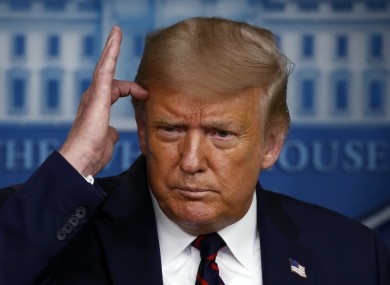Part two of Noteworthy’s investigation examines pay and conditions of these frontline workers, as well as profits made by providers.
THIS IS FROM IRELAND BUT THE PROBLEM IS GLOBAL
Source: Noteworthy/Flourish
Source: Noteworthy/Flourish

“MY SON IS after getting a job in Aldi for the summer and he’s getting more money per hour than me. It’s demoralising and makes me want to leave the profession.”
Linda Byrne is a home carer who has been working on the frontline throughout the pandemic, yet, like many Noteworthy spoke to over the past few weeks, feel that carers in the community are the forgotten heroes of Covid-19.
She is fully qualified, has five years’ experience and is paid €12 per hour – less than the recommended living wage of €12.30 though above the minimum wage of €10.10.
“Carers say that they don’t do it for the money, which is very true, but when that’s what you’re relying on for your mortgage, bills and to look after three kids… you need more money.”
Over the past number of weeks, Noteworthy has taken a deep dive into the home care sector. In this, the second of our three-part investigation, we examine the pay and conditions of these vital frontline workers, as well as the profits made by providers. We reveal:
- The HSE pays around €25 per hour of care to providers for home support services but home carers and healthcare assistants (HCAs) can pocket less than half of this fee.
- There is debate over operating costs of private home care as some experts say that ‘generous’ margins have created problems with the retention of carers.
- Funding for home care provision has shifted substantially from the HSE to private providers over the past decade, according to new research by UCD.
- The top five home care private providers received grants of €128 million between them last year.
- Of the four with accessible accounts, they were all profitable, with accumulated profits of up to €2.3 million.
- The parent companies of the top three providers receiving HSE grants are based outside of Ireland – in Switzerland, France and the United States.
- The directors of Clemac Home Care Services – the previous owners of one of these top three companies, the Irish Bluebird Care franchise – were paid over €900,000 in 2018.
In the first part of our investigation, we showed that many carers took a pay hit and felt unsupported by their companies during the pandemic. Tomorrow, we examine the impact that lack of regulation is having on home care and discover what’s in store for the future of the sector.
A shift from public to private
Home care in Ireland was traditionally provided by the public sector, through the HSE, as well as voluntary organisations, often run by the Catholic Church. However, this has shifted in recent years with private providers now supplying a substantial chunk of home care services.
UCD associate professor Dr Julien Mercille, studying government spending on home care over the past decade, found that the proportion of funding being allocated to the private sector grew from insignificant levels in the mid-2000s to nearly half the public home care budget last year. The full study he conducted with student Nicholas O’Neill is set to be published in the coming months.
This trend towards the private sector is similar to other areas of Irish healthcare. When looking previously at the nursing home sector, Mercille showed that over the last 20 years it had transformed from a mostly public system into a mostly private, for-profit one.
The reason for this outsourcing of services is not really clear due to a lack of data, Mercille explained.
You can ask: ‘Is this because the private sector is really cheaper or is it more of an ideological thing?’
Mercille also found that funding to the nonprofit sector has stagnated during the same period. From talking to providers, Mercille said this is partly explained by “regulation burden” from the tender system as private providers were better able to handle this.
Passing profits to carers
The home care sector “is a lucrative business but not enough of those funds are flowing to carers”, according to Michael Harty, founder of the online platform Home Care Direct, which enables people to employ carers through the site. He was also the chairperson of the representative body for private for-profit providers, Home and Community Care Ireland (HCCI), from 2012 to 2016, when he previously owned a traditional home care provider.
Noteworthy sent a number of inquiries to private providers in the Dublin region to find out how much it would cost per hour for home care for an older person. The quotes we got back ranged from an average of €25 on weekdays and rose up to an average of €29 at the weekend. Private clients can get up to 40% tax back on this cost.
This is similar to what the public purse is paying providers.
In a statement to Noteworthy, the HSE said that “funding for home support services in 2020 is based on a blended rate across all provision at €25.26 per hour”. It added that this rate varies depending on tender or service arrangements.
However, recent research showed that home carers and healthcare assistants (HCAs) pocket less than half of this fee.
A survey carried out during the pandemic by HCA and Carers Ireland found that over half of the 450 qualified public and private carers and HCAs that responded were earning €12 or less per hour, with 12% stating they earned €10 when their hourly wage was rounded to the nearest euro. This means that if carers were on the minimum wage, they would report it as €10 for the purposes of this survey, and does not suggest that carers are being paid below minimum wage.
The current minimum wage is €10.10 per hour and the recommended living wage is €12.30 per hour.
An interactive version of this graph can be found here.
Joint research by HCA & Carers Ireland and UCD, published in March, reported that “those employed in the private sector were, on average, paid 40% less than their fellow healthcare assistant with the same qualification and experience within the public sector”. The same study found that many would be paid more on social welfare than they would in a full week of work as a home carer.
This was also what we found when speaking to carers over the course of this investigation. Carers working for private for-profit providers were paid between €11 and €12.30 per hour. There was little distinction between part- and fully-qualified carers, with one carer telling us her hourly rate would increase by a euro to €12 when she was fully qualified.
‘Generous’ corporate margins
Allison Metcalfe, founder of HCA and Carers Ireland said that there have been some wage increases in recent years but more could be done. “There needs to be a minimum basic rate of €14 per hour” as people are putting themselves through higher education and training but then often getting the “basic minimum wage”.
In a submission to the Government last November, HCCI said “the average reported hourly rate for a HCA employed by a HCCI member is €12.14”. The submission continued: “This well exceeds the national minimum wage and is virtually at parity with the 2019 Irish living wage.”
This is in contrast to wages in the public sector which, according to SIPTU, have risen to a maximum of about €15.50 an hour through collective agreements. Carers working in the not for profit sector are also paid more than private providers. SIPTU shop steward Ellen McNamee told us most are paid €14 upwards.
“By the time you get to the operational cost, you are left with a margin in the private sector of five to ten percent,” according to Joseph Musgrave, chief executive of HCCI. He said that this translates to one to two euro per hour of care.
If you’re a small business owner, you can’t get by on one percent margins, because any shock puts you under.
Harty, a past chair of HCCI, had a different view. “The margins are very generous whether it’s a small or large provider.” He said these margins have already created problems with the retention of carers. He felt that unless “margins are controlled, those problems will continue”.
With HSE budgets under pressure, he said he is sure it “wants to ensure value for money” but is not sure “large corporate margins are the best way to ensure proper use of those funds”.
A profitable business
An interactive version of this graph can be found here.
The top five private providers – Home Instead, Bluebird Care, Comfort Keepers, Irish Homecare and Caremark Ireland – received grants of €128 million between them last year. These five received over 70% of all revenue allocated to private home care providers by the HSE in 2019.
In 2017, this figure was €100 million so it has risen by almost €30 million in the space of two years.
Noteworthy analysed the profits of these five providers to find out just how much profit they are making. The company accounts we could access all showed profits, with accumulated profits ranging from €273,000 in the case of Caremark Ireland to €2.3 million for Irish Homecare.
Home Instead Senior Care was paid €140 million over the past three years by the HSE, with €55.5 million of this in 2019. This was more than any other private home care provider.
This franchise operator is owned by a Swiss company and since 2018 has consolidated its accounts. This means that very little financial detail is provided in relation to the various individual Irish subsidiaries as their accounts were submitted in Ireland in combination with accounts for the rest of the Swiss-Irish group.
A statement from Home Instead in Ireland said that “the accounts of Home Instead Holding AG have been filed in accordance with the Companies Act 2014 and have been accepted by the registrar of companies”. It continued: “Our public tenders are subject to State tendering rules, to which we adhere.”
In 2017, the last year before the accounts were consolidated, the Irish holding company had accumulated losses of €260,000 since its incorporation in 2014. However, it had shareholders’ funds of €6.3 million at the end of 2017, suggesting it was well capitalised and in the black.
This table can also be viewed here.
Bluebird Care’s accounts were also complicated, even more so as the company who owned the master franchise in Ireland, Clemac Home Care Services, recently sold the franchise to UK Bluebird, which is ultimately owned by a US company.
Irish-based Clemac received over €75 million from the HSE over the past three years. From its incorporation in 2007 to the end of 2018, it had accumulated profits of €1.2 million and made a trading profit in 2018 of more than €500,000.
The company did make a trading loss of over €550,000 in 2017 yet the two directors, Brian and Lyn MacGoey were paid over €625,000 between them that year. They were also paid over €900,000 in 2018 between “emoluments in respect of qualifying services”, pension contributions and “compensation for loss of office”.
When asked about this, Brian MacGoey said he was “bound by the sale purchase agreement not to discuss or disclose details”. He passed our query to Bluebird Care UK who said it would be inappropriate to comment as it relates “to a separate business entity that we have no involvement in”. They subsequently suggested we revert back to MacGoey.
The HSE paid Comfort Keepers a similar amount to Bluebird Care over the past three years, receiving €67 million in revenue. From their incorporation in 2005, the company accumulated profits of €2.6 million by the end of 2018, making them the most profitable of these companies over the course of their lifetime. Trading profits in that financial year topped €600,000.
They are also owned by a company outside the State, being a subsidiary of a Belgian company, which is, in turn, a subsidiary of French-registered Sodexo Plc, whose worldwide revenues totalled €22 billion last year.
Irish Homecare and Caremark Ireland received €35 million and €28 million respectively from the HSE over the past three years. Both had healthy accumulated profits over each of the company’s lifetimes.
‘They don’t let you be heroes when it comes to your rights’

Carers are not receiving the benefit of home care funding, according to Emily*, a carer for a Home Instead branch in the West of Ireland. “Private home care agencies are businesses so they’re trying to make money.” She believes there is no reason for private providers and feels the HSE should employ more carers directly.
After a number of their carers in various branches across the country contacted us, Noteworthy reached out to the headquarters of Home Instead in Ireland. We told them that those that spoke to us were not happy with their pay and conditions. We then asked a spokesperson if Home Instead felt they paid carers adequately. They answered: “Home Instead Senior Care’s pay, benefits and practices are not as you’ve presented.”
SIPTU agreed that there should be more public provision of care. “We shouldn’t have a profit motive,” said Marie Butler, healthcare assistants’ sector organiser for SIPTU.
Brian Rusk, healthcare assistant in a private nursing home in the Midlands and founder of the Facebook group Care Assistants Ireland, explained:
Brian Rusk, healthcare assistant in a private nursing home in the Midlands and founder of the Facebook group Care Assistants Ireland, explained:
Many carers are trying to get out [of the private sector] and into a HSE post so they have a pension, sick pay, better representation with trade unions.
“People don’t think of the wages when they get into caring. It’s at the later stage when you realise ‘I have no permanent job so I can’t get a mortgage’ and the real issues start showing up”.
Though pay and conditions may be better in the HSE, Geraldine McNamara, HSE community healthcare support assistant and SIPTU shop steward, told Noteworthy that “the people who look after older people in their own homes have always been at the bottom of the list” in Ireland.
People seem to have an image of what we do, that isn’t the real image [and] don’t realise that you’re looking after people from the time they’re getting ill until the time they die.
This was a common sentiment amongst all the carers and HCAs we spoke to over the course of this investigation. They felt forgotten, unappreciated, undervalued and overlooked.
Providers say that they do support their workers. A spokesperson from Home Instead said: “As you can appreciate, the home care sector has experienced challenges over the last number of months and we have worked closely with the HSE to continue to provide care for vulnerable seniors in our community.”
Bluebird Care said they “pay above market rates and throughout the pandemic, have invested heavily in protecting both our staff and customers and also in additional training”. Comfort Keepers said that they review “carer pay on an ongoing basis and in 2016 and 2017 invested millions of euros to ensure hourly and 30-minute rates of pay for carers were enhanced”.
“They don’t let you be heroes when it comes to your rights,” said McNamara who outlined issues for HSE HCAs such as lack of rosters and unpaid travel time. There has been some progress within the HSE, with a new pay scale being implemented from September for those working in the community.
Working from week to week
“The biggest problem in the community is that we’re not guaranteed our hours,” said Ellen McNamee, home carer in the community not for profit sector and SIPTU shop steward. “None of us can be sure from month to month” the number of hours we will work, she added.
Carers have to “keep at” companies in order to get more hours, she explained. Newer carers often contact her as it is “a worry all the time for them” and they find it hard having to constantly ask their employers for this.
She is calling on the Government to implement guaranteed hours. McNamara is in her 50s and said that most of her colleagues are older, with some 30 years in the job.
If they want to keep older people at home and out of hospitals, they have to make it attractive for the younger person coming up.
The recent UCD study “noted a growing trend towards older adults working in care compared with younger groups”. Of the almost 2,000 carers who participated in this research, 45% were 46 or older and over 90% were women. In comparison, the last census in 2016 found 37% of women in the overall labour force were 45 or older.
Some of McNamee’s colleagues have left the sector to work in care homes or in hospitals “for less money” because of these issues. “They often get more holidays and have a pension whereas in the private and not for profit sector we don’t,” she added.
Butler from SIPTU said that those depending on their hours in the private sector are very vulnerable. “It’s an issue we haven’t got to the bottom of yet.”
The UCD study recommended:
[The] pay rate for those working in private sectors, who are usually working on ‘if and when required’ contracts should have a set hourly rate, across the board.
One of the difficulties in campaigning for better conditions in the private sector is that HCAs “would be afraid to be seen in a union” due to a fear of getting hours cut as a consequence. Butler found this is particularly true for migrant workers.
This is also something that Noteworthy encountered when talking to carers in the private sector and is the reason why most workers that we spoke to asked to use a pseudonym, for fear of the consequences of speaking out.
Travelling out of pocket
In addition to low pay, many carers are not compensated for either travel time or mileage costs. Using your own transport for work proposes and not being paid for this is a “clear violation of the Court of Justice of the European Union in Case 266/14 generally referred to as the ‘TYCO case’”, according to the recent UCD study.
“Agencies don’t have to pay mileage. It costs me roughly €20 per week out of my salary to visit my clients,” according to Emily, who works with Home Instead in the West. Another carer at a different branch of the provider was paid €30 for mileage every two weeks.
Home Instead told Noteworthy that their home carers receive mileage or travel allowance. When it was put to them that some carers we spoke to said they did not receive this, with detail of Emily’s mileage expenses, a spokesperson said: “We cannot comment on individual cases or claims such as the one to which you refer.” They added:
A large number of Home Instead companies are independently owned and operated and as such there may be variation on terms and conditions across the offices, based on local HSE agreements and/or local circumstance.
We also asked other companies in the top five for-profit provider list whether their home carers were in receipt of mileage or travel allowance.
Bluebird Care said that they pay travel or mileage allowances “in line with sector norms” and Comfort Keepers said that it does so “where relevant”. Caremark stated that “this is determined on a case by case basis in conjunction with the HSE”.
John Florence, chief executive of Irish Homecare, said: “The majority of our work is in highly populated areas and we have an extremely robust automated scheduling system allowing us to align our carers with clients in close proximity, therefore mileage is not an issue for us.”
He added that in areas where there may be more distance between calls, they “provide different travel allowances” which are either funded by the HSE or Irish Homecare.
A spokesperson for the HSE told Noteworthy:
Pay, terms and conditions of employment of home support workers employed by Approved Providers including arrangements for travel and fuel allowances is a matter for those private agencies.
In the HSE tender for the provision of home support services, it states that “providers may seek support with travel costs in recognition of rural area travel costs”. One of the tender documents details the rates and they range from €3 for a journey of 20km to €5 to a journey of up to 60km. This is significantly lower than the rates the HSE pays for its own staff which for the smallest engine size, range from over €7.50 for 20km to almost €23 for 60km.
HCCI’s chief executive blamed the tender system for issues with travel time and mileage. It is at the financial discretion of each HSE area but some “allow you to invoice for the cost of mileage”, Musgrave said. He added that you cannot include travel time as part of your cost of care delivery.
However, Butler of SIPTU, challenged whether this is so, as “they’re expected to tender for all of their costs”. She claims that private providers don’t do that as they want to get the tender. If they did, then “their costs would be very similar to that of the HSE or not much lower” so they leave out items such as mileage.
Butler said that workers are out of pocket in relation to mileage in the private sector. This is one reason that they lose staff.
Sometimes you get the impression, from the private sector in particular, that they’re vocational workers and they should be happy to do this for nothing.
Ellen McNamee said there is inconsistency, even within the not for profit sector, in terms of mileage and travel allowance. Her company, which McNamee preferred us not to name, pays a set travel allowance as part of their wage but others pay a set amount of mileage or don’t pay travel costs at all.
No emphasis on upskilling
From our contact with carers working for for-profit providers, those that were fully qualified earned around one euro more than their part-qualified colleagues, and did not feel that they were rewarded for their level of experience.
In order to change this, Musgrave felt that a new tender system that provides a variety of levels of care, should replace the current time-on-task model. This would give carers the “incentive to upskill” as they could move up the levels from more basic care to advanced complex clients.
The introduction of specialities in home care has been recommended in official reports in recent years. A HSE review of HCAs in 2017 recommended:
The potential for the development of modular extensions for HCAs working in specialist areas or locations should be considered.
In a report last year, the Joint Committee on Health on home care provision recommended that “carers be incentivised with career pathways”. This issue not only applies to the home care sector but across the variety of roles and workplaces of healthcare support assistants.
The recent UCD study on HCAs and carers found that a third of respondents stated that their employer does not allow or support opportunities to upskill. The survey does not specify which companies provide these opportunities so it should be noted that two-thirds of those who responded did feel they had the opportunity to upskill.
HSE community HCA and SIPTU shop steward McNamara said “even if you progress and get specialties, you still get the same wages as a person who refuses to do any courses”.
Citing the different types of HCAs such as nursing home, community, disability, childcare and others, McNamara felt that “you should be able to branch out and specialise in certain areas”. This is needed in order for people to feel valued in their job, she added.
Knock-on impacts
These issues with pay and conditions in the private sector have led to a high staff turnover, according to Butler from SIPTU, which can affect those receiving care. “You don’t necessarily see the same carer twice.”
This is an issue that affected Nancy* who is in her 80s and lives on her own. After a stroke, she needed home care and received a HSE package. “It was a disaster from the start,” she explained, as living in a rural town in the West, she found it hard to find a provider who serviced her area.
During the first year, she had a new carer almost every month, with some leaving because of travel distance. Nancy found this hard as with each new carer she had to “show them where everything is and what she needs”.
Her private provider that is contracted by the HSE often does not provide cover if her regular carer is away.
There would be a full week where she wouldn’t show up and there wouldn’t be anybody to replace her.
This has left Nancy paying for care at these times as well as extra care she needs in the evenings which has eaten into her savings. She said that she “can’t continue to pay for it”. She asked Noteworthy to use a pseudonym as her care hours were significantly cut by the HSE recently which left her “low mentally and physically” and she was worried about a further cut.
“We have a shortage of carers because it’s an unattractive career,” said Metcalfe from HCA and Carers Ireland. “It’s a low rate of pay, you don’t get paid for travel, you’re spending most of your time driving.”
She added that “there is one way to ensure that carers are treated well with good terms and conditions of employment, and that’s to regulate the system”.
***
Noteworthy delves further into the impact that this lack of regulation is having on the sector in part three of this investigation tomorrow. In part one, which you can read now, we revealed how home carers became the forgotten frontline workers of the pandemic.
*Names have been changed due to requested anonymity
***
This investigation was carried out by Maria Delaney of Noteworthy, with additional reporting by Ian Curran of TheJournal.ie. It was proposed and funded by you, our readers, as well as with support from the Noteworthy general fund.
Due to the volume of issues raised by carers about the home care sector when they answered our call-out, we decided to expand the investigation into a three-part series. If you would like to help towards the cost of this additional work, please support the general fund here.
Noteworthy is the investigative journalism platform from TheJournal.ie. You can support our work by helping to fund one of our other investigation proposals or submitting an idea for a story. Click here to find out more >>
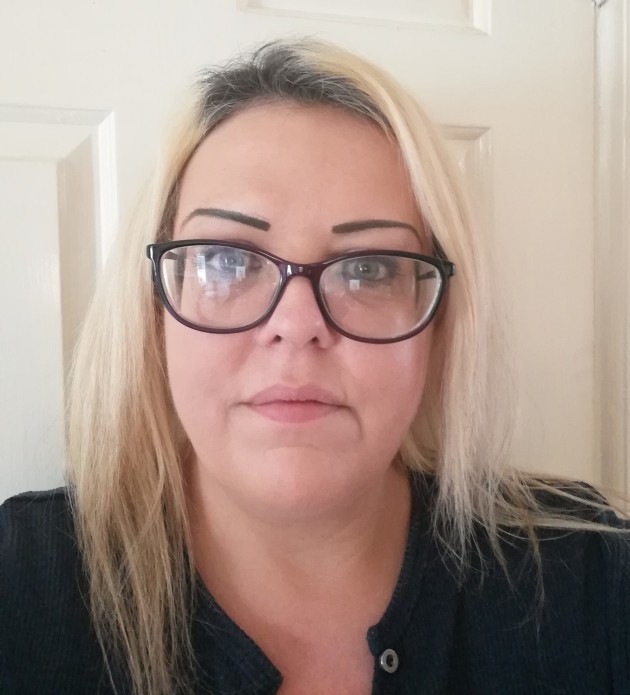

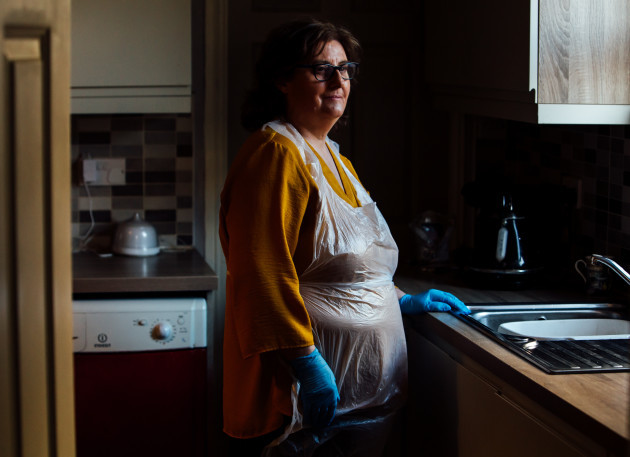
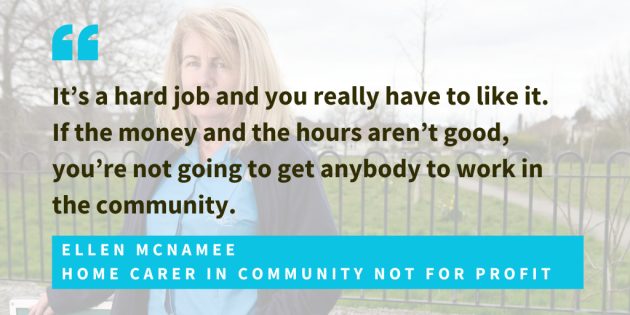








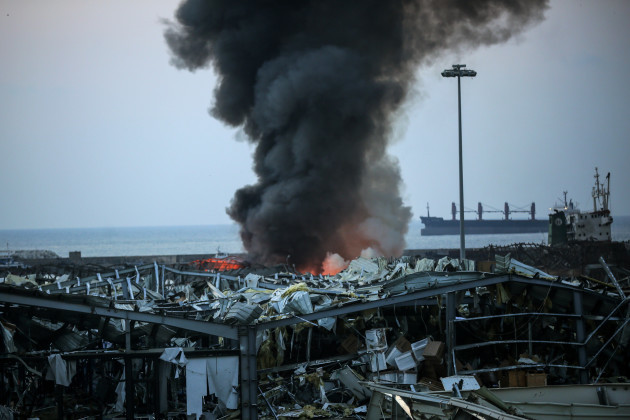
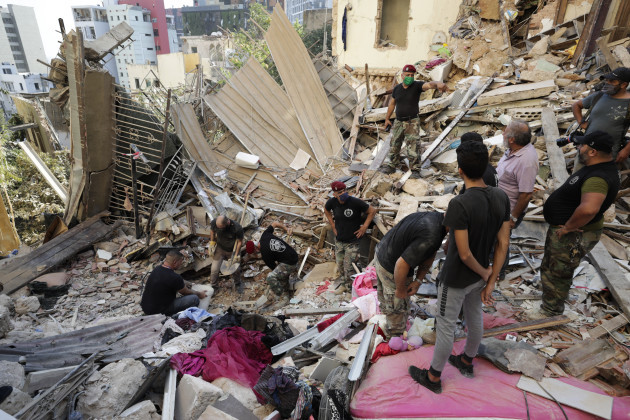 Lebanese soldiers search for survivors after the massive explosion in BeirutSource: Hassan Ammar via PA Images
Lebanese soldiers search for survivors after the massive explosion in BeirutSource: Hassan Ammar via PA Images
